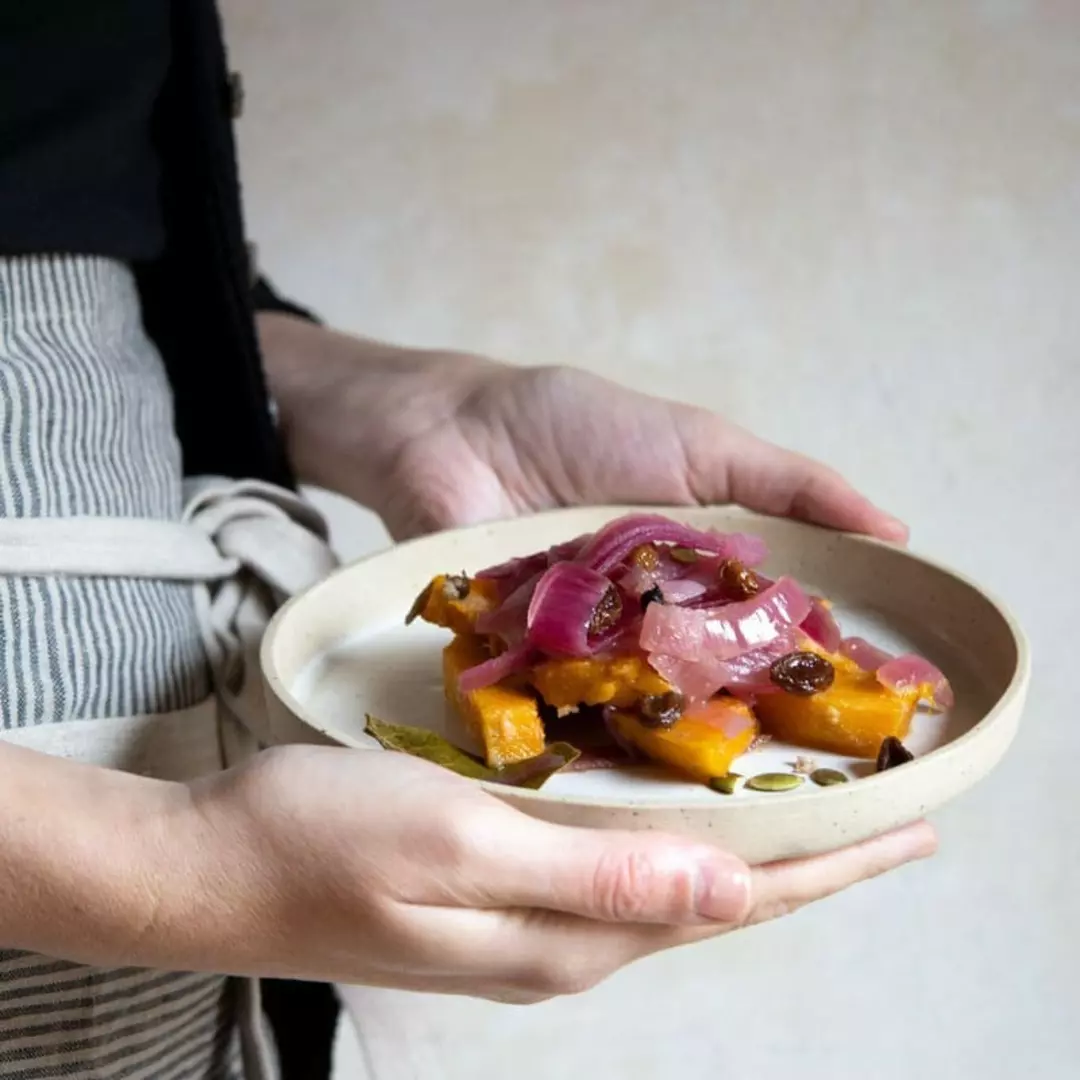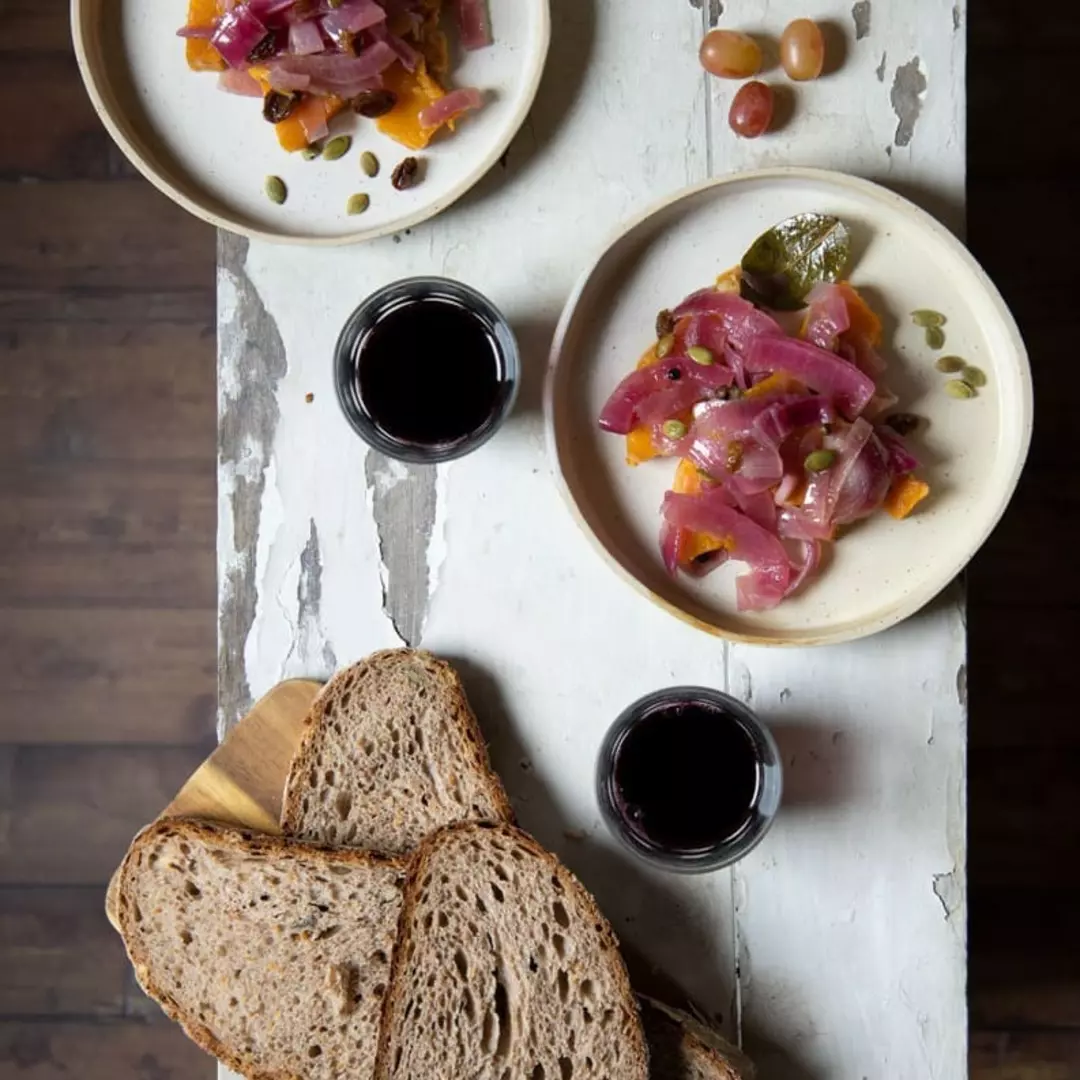10 Ingredients
|
|
|
|
|
|
|
|
|
|
|
|
|
|
|
|
|
|
|
|
Saor is a typical Venetian condiment made with sweet and sour onions, used to enhance the flavor of fish. Traditionally, it is prepared with sardines and small soles (called sfogi), which are first coated in flour and fried in hot oil, then covered with white onions stewed with wine vinegar, sugar, and spices. The dish must rest for several days before being enjoyed.
I still remember when I was a child: in our house, it was firmly believed that saor should never be eaten before three days—or even better, four—to allow the flavors to blend perfectly. Every time my grandmother made it, it was a celebration. Even as a little girl, I sensed how special it was, though, like many children, I was initially put off by such intense flavors, which I only learned to appreciate later.
This dish is a piece of history, dating back to the Middle Ages, when Venetian fishermen used it to preserve fish during long sea voyages. The vinegar ensured preservation, while the sweetness of raisins and pine nuts balanced the sharp, acidic flavor that still fills the kitchen every time it is prepared today. One of the earliest written records of a recipe similar to saor is found in an anonymous 14th-century manuscript, known as the Anonymous Venetian (that is housed at Marciana Library, in Piazza San Marco, Venice). In this text, a dish called cisame de pesse is described, considered the ancestor of modern saor. The recipe involved fish seasoned with onions, vinegar, honey, and spices, with peeled almonds replacing pine nuts.
For years, I have been making a plant-based version of saor, experimenting with seasonal ingredients. In winter, I use pumpkin or late radicchio rosso di Treviso, while in summer, I opt for round eggplants. I have even tried saor with celeriac and apple—a combination that turned out to be a delightful discovery!
Below, I share my recipe using pumpkin, but you can substitute it with a celeriac of the same size or with ten sprigs of radicchio, cut into quarters. I also like to experiment with different seeds—sometimes replacing the expensive pine nuts with sliced almonds, recalling the ancient Venetian version, or adding pumpkin seeds, especially when the main ingredient is pumpkin, strictly Delica.
HOW TO COOK IT
Peel the onions, rinse them, and cut them in half, then into slices about 3-4 mm thick. Sauté them in a non-stick pan (a wok works well too) with bay leaves and whole black peppercorns. Add salt, deglaze with vinegar, and stir in the raisins. Once the vinegar has evaporated, reduce the heat to low and continue cooking for about 30-40 minutes, adding a little water if needed. At the end, add the sugar and stir until completely dissolved, then turn off the heat and let it rest.
The onions should be soft with a bit of cooking liquid. While the onions are cooking, wash and clean the pumpkin, cut it in half, and then into slices about 1 cm thick (if the pumpkin is organic, you can keep the skin on). Heat peanut oil to 180°C (356°F), coat the pumpkin slices in flour, and fry them 5-6 pieces at a time. As they finish frying, remove them with a slotted spoon and place them on paper towels to absorb excess oil. Lightly salt them. Once all the pumpkin is ready, let it cool.
Take a glass or ceramic dish and spread a few spoonfuls of onions on the bottom. Then, arrange the pumpkin in an even layer, making two layers if needed, and finally cover it completely with the onions. Garnish with pine nuts, cover with plastic wrap or a lid, and let it rest in the fridge for at least 24 hours before serving.
Preparation time
about 2 hours

